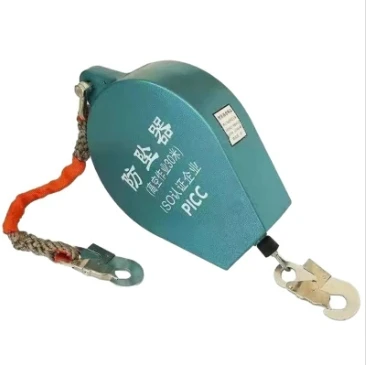


The Importance of Fall Arrest Systems in Workplace Safety
In various industries, especially construction and maintenance, falls from heights are one of the leading causes of accidents and fatalities. According to statistics from the Occupational Safety and Health Administration (OSHA), falls account for a significant percentage of workplace injuries. To mitigate these risks, fall arrest systems play a critical role in ensuring the safety of workers who operate at elevated levels. This article delves into the importance of fall arrest systems, their components, and best practices for implementation.
Understanding Fall Arrest Systems
Fall arrest systems are designed to safely catch individuals who fall from heights, preventing them from striking the ground and sustaining severe injuries. These systems include harnesses, lanyards, anchorage points, and other equipment that work together to secure a worker in case of a fall. The primary goal of a fall arrest system is not just to stop a fall, but to do so in a manner that minimizes the risk of injury.
Components of Fall Arrest Systems
1. Full-Body Harness The harness is worn by the worker and distributes the force of a fall across the body, reducing the likelihood of injury. A well-fitted harness is essential for effective fall protection.
2. Lanyard This is the flexible line that connects the harness to a safe anchorage point. Lanyards come in various forms, such as shock-absorbing or positioning lanyards, each serving a unique purpose in fall protection.
3. Anchorage Point This is a secure point to which the lanyard is attached. It must be capable of withstanding the forces experienced during a fall, and it is essential that workers are trained to identify and use appropriate anchorage points.
4. Self-Retracting Lifelines (SRLs) SRLs are devices that automatically retract as the worker moves, providing continuous fall protection without the need for constant adjustment. They are particularly useful in situations where mobility is essential.
5. Safety Nets In certain environments, safety nets can be installed below work areas to catch falling workers or tools, adding an extra layer of protection.
The Need for Training and Compliance

The effectiveness of fall arrest systems is heavily reliant on proper training and adherence to safety regulations. Workers must be trained on how to properly wear harnesses, connect lanyards, and inspect equipment before use. Additionally, employers need to ensure compliance with OSHA standards and other regulatory guidelines concerning fall protection.
Regular training sessions can help workers stay updated on the latest safety practices and equipment use, fostering a culture of safety within the workplace. Periodic checks and maintenance of fall arrest systems are also crucial, as worn or damaged equipment can significantly compromise worker safety.
Implementing Best Practices
For a successful fall arrest program, organizations should adopt the following best practices
1. Conduct Risk Assessments Identify areas where falls may occur and evaluate the associated risks. This assessment should inform the development of a comprehensive fall protection plan.
2. Provide Quality Equipment Invest in high-quality fall arrest equipment and ensure it meets the necessary safety standards.
3. Encourage a Safety-first Culture Promote a work environment where safety is prioritized, and workers feel comfortable reporting hazards or requesting assistance.
4. Regular Training and Drills Implement ongoing training programs and conduct emergency response drills to keep all workers prepared for potential fall scenarios.
5. Engage Workers Involve workers in discussions about safety measures and fall protection strategies. Their insights can lead to improved safety practices.
Conclusion
Fall arrest systems are indispensable for protecting workers at heights from potentially fatal accidents. Through proper implementation, training, and adherence to safety regulations, organizations can create safer work environments and significantly reduce the risk of falls. Prioritizing fall protection not only safeguards workers’ health but also enhances overall workplace productivity and morale. Investing in effective fall arrest systems and fostering a culture of safety is essential for any organization committed to the well-being of its workforce.



